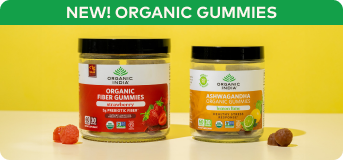

Section

Back
For centuries, herbalists and healers have turned to the earth for wisdom, trusting the gentle potency of plants to support wellness in harmony with the body. One such plant is stevia, a naturally sweet herb that’s become increasingly common in teas, packaged foods, and sugar-free beverages. But while many products use the word “stevia” on their labels, what’s inside isn’t always what nature intended.
Not all stevia is created equal. There are many types of stevia, ranging from whole leaves harvested with care to lab-created compounds that barely resemble the original plant, much less contain even a smidgeon of the inherent quality.
Have you ever experienced a bitter aftertaste or digestive discomfort from a “stevia” product? The reason may lie in how it was processed or the kind of stevia it contained.
In this guide, we’ll explore the different forms of stevia, what to avoid, and why the whole stevia leaf—like the kind used in ORGANIC INDIA teas—is the most natural, health-supportive way to enjoy this plant’s sweetness.
Contents
- What Is Stevia?
- Why Stevia Tastes Different Depending on the Type
- Types of Stevia
- Does All Stevia Contain Erythritol?
- What Types of Stevia Should You Avoid?
- What Is the Healthiest Form of Stevia?
- Choose Stevia That Respects the Plant
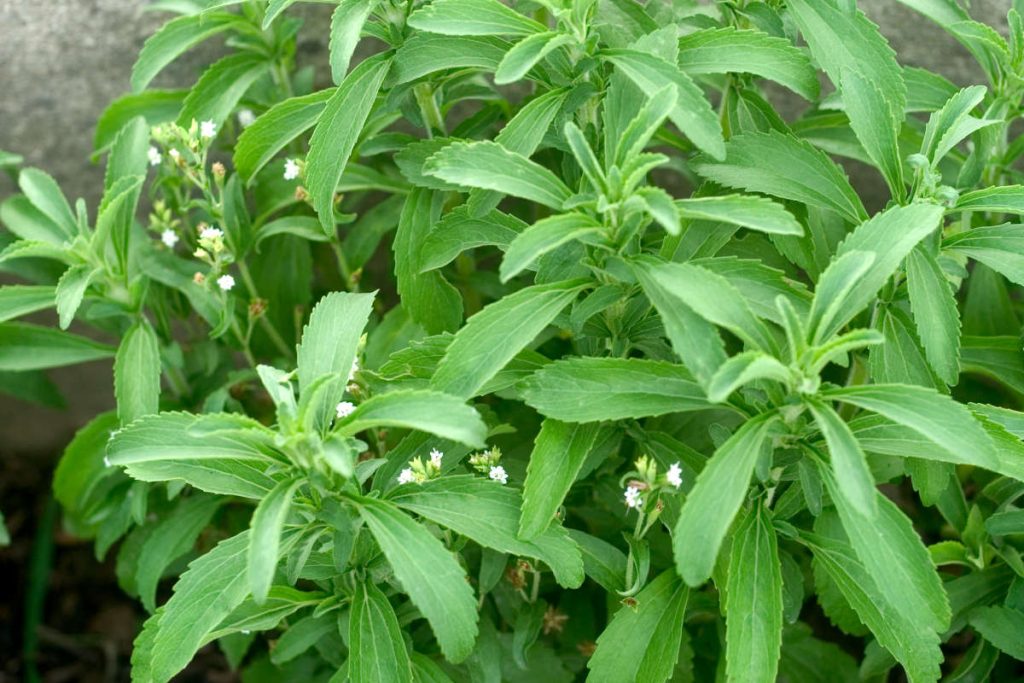
What Is Stevia? A Natural Sweetener
Stevia is a sweet sugar substitute extracted from the leaves of an herb called Stevia rebaudiana. The leafy green plant is native to Paraguay and Brazil in South America and is 50 to 300 times sweeter than sugar. The Guaraní people of South America called the herb ka’a he’ê, which means “sweet treat,” and have used it for centuries to sweeten teas.
Today, stevia is used around the world as a sugar alternative. The human body does not metabolize the steviol glycosides, the sweet-tasting compounds in stevia, so it has become a leading zero-calorie sweetener for food and beverages.
But the word “stevia” is often used as a blanket term, even for products that are far removed from the efficacy of the whole plant. While some forms honor the purity and intention of the original herb, others are refined and altered to such a degree that they no longer resemble the original, living plant at all.
Why Stevia Tastes Different Depending on the Type
If you’ve ever tried a product containing “stevia” and found it to be too sweet, unbearably bitter, or artificial tasting, you’re not alone. Many people who try stevia once and have a bad experience write it off completely without realizing that the flavor and effect of stevia vary depending on how it’s made.
Let’s break it down. Stevia contains a group of naturally sweet compounds called steviol glycosides. These include molecules like Rebaudioside A (Reb A), Rebaudioside M (Reb M), and Rebaudioside D (Reb D). Each of these glycosides presents a distinct flavor and sweetness profile.
Food manufacturers often isolate and concentrate these individual compounds to create highly potent sweeteners. But in doing so, they remove the balancing phytochemicals and subtle flavors of the whole leaf. This results in an unnaturally intense sweetness that can linger on the tongue like a guest who has overstayed their welcome.
The more a stevia product is processed, the more its energy strays from its original plant form. In Ayurveda and holistic traditions, we know that the intelligence of a plant resides in its wholeness, not in stripped-down isolated extracts. This is especially true for stevia.

Types of Stevia: A Breakdown
Stevia is a naturally sweet herb that has gained widespread popularity as a plant-based, calorie-free sugar alternative. It’s often used by those seeking to reduce sugar intake and follow a more natural approach to wellness. But not all “stevia” that appears on many ingredient labels is the same.
Some products stay true to the plant’s original form, while others are stripped of their natural compounds and are heavily processed in labs. These differences affect how stevia tastes and how the body reacts to it. In holistic medicine, the wholeness of the plant matters. Not all types are created equal in terms of flavor or plant integrity.
Let’s look more closely at the different types of stevia you may encounter, from whole leaf to the refined blends.
Stevia Leaf (Whole Leaf Stevia)
Stevia leaf, or whole leaf stevia, is stevia in its most natural form. It’s simply harvested, dried, and sometimes ground into powder. It retains all of its natural plant compounds, not just the sweet ones, and offers a mild, balanced flavor without bitterness or chemical aftertaste.
At ORGANIC INDIA, we use the whole stevia leaf in our teas and herbal infusions. Grown through regenerative agriculture and handpicked by small family farmers in India, our stevia reflects the plant’s integrity and original purpose. It complements the herbal ingredients without overpowering them, and creates a gentle sweetness that feels welcoming.
Whole stevia leaf is the form closest to how it’s been used for generations in traditional wellness practices.
Stevia Leaf Extract
Stevia leaf extract is made by steeping the leaves in water or alcohol, then filtering and concentrating the resulting liquid. This creates a more potent sweetness than the whole leaf option, but it still retains a variety of steviol glycosides, making it less refined than the single-compound products like Reb A.
Reb A (Rebaudioside A)
Reb A is one of the most common refined compounds derived from stevia. It’s 200-300 times sweeter than sugar and is often used in tabletop sweeteners, soft drinks, and “sugar-free” baked goods. Its popularity among food manufacturers stems from its cost-effectiveness compared to other types of sweeteners.
Reb A is highly purified and has a distinctly sharp sweetness that can linger and sometimes taste bitter or metallic to certain people. It’s extracted and refined in a lab and no longer resembles the stevia plant itself. If you have tried stevia and didn’t enjoy the taste, you likely encountered this version.
Reb M and Reb D
Rebaudioside M and Rebaudioside D are newer steviol glycosides that have gained popularity in processed foods and ready-to-drink beverages. They are considered to have a “cleaner” taste than Reb A.
Both Reb M and Reb D stevia can be produced through plant extraction methods, but these compounds exist in very small amounts. In order to produce larger amounts, they’re often made through other production technologies like bioconversion, glucosylation, or enzymatic fermentation.
These technologies start with steviol glycosides extracted from the stevia leaf, but then use enzymes or fermentation to mimic the processes that naturally occur within the stevia plant in nature. In other words, Reb M and Reb D may be labeled as stevia-derived, but they are far removed from the whole plant and its natural sweetness and benefits.
Steviol Glycosides (An Umbrella Term)
“Steviol glycosides” is a general term for all the sweet-tasting molecules in stevia. When listed on an ingredient label, it usually signals that the product contains one or more highly refined, isolated compounds, like Reb A, Reb M, or Reb D, not the whole leaf or a full-spectrum extract.
Stevia Blends
Stevia blends are among the most processed types of stevia on the market. Blends typically combine refined steviol glycosides (like Reb A) with sugar alcohols such as erythritol, or fillers like dextrose or maltodextrin. While they may be labeled as “natural” or “plant-based,” these blends are far from the natural whole stevia leaf.
Many people experience digestive discomfort from these blends. They also tend to have exaggerated sweetness and an artificial mouthfeel, further distancing them from the gentle sweetness nature provides.
Does All Stevia Have Erythritol?
No, not all stevia contains erythritol, but many stevia blends do. Erythritol is a sugar alcohol often used as a sugar substitute. It’s one of the most common artificial sweeteners used today and is a popular ingredient in foods marketed to those concerned with blood sugar issues.
Erythritol is used to bulk up stevia products and improve their texture. While it’s calorie-free, it can cause digestive discomfort in some people.
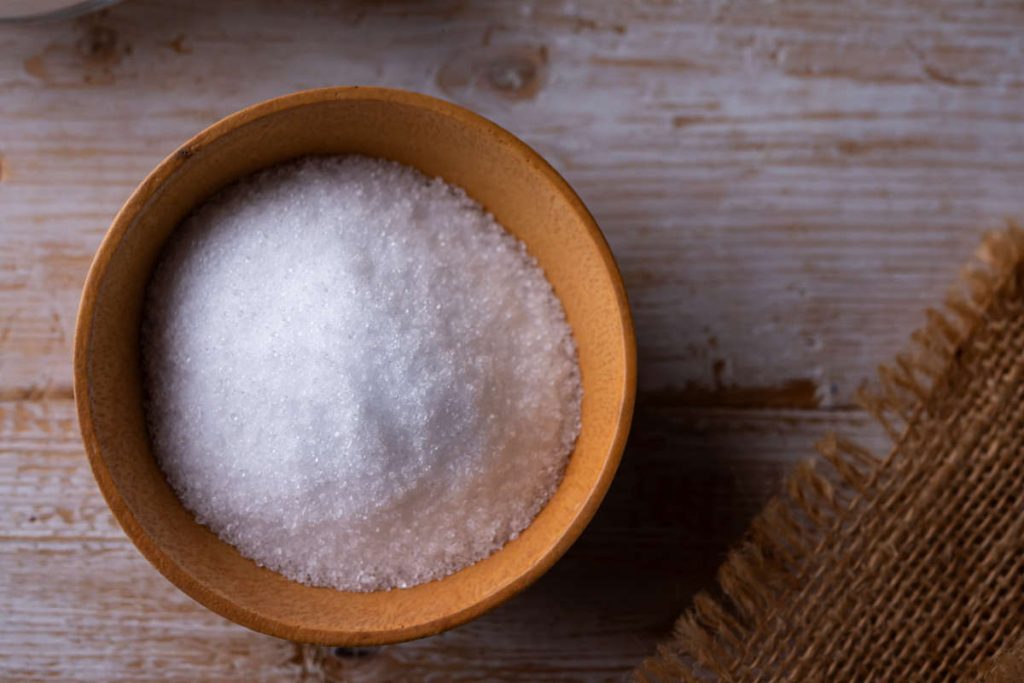
What Types of Stevia Should You Avoid?
As always, we believe in supporting the body’s innate intelligence with herbs and foods that are produced naturally, honoring the earth from which they come. When it comes to stevia, the whole leaf is best; therefore, we suggest avoiding:
- Stevia labeled only as “steviol glycosides”
- Products with Reb A, Reb M, or Reb D as the primary ingredient
- Stevia blended with erythritol, dextrose, or maltodextrin
- Any stevia not identified as whole leaf or full-spectrum extract
These highly refined products may offer sweetness, but they do so at the cost of losing the plant’s natural goodness and flavor profile.
What are the Healthiest Types of Stevia?
The healthiest form of stevia is whole stevia leaf. It is the most health-supportive form of stevia, and it is aligned with Ayurvedic principles and traditions. Used as a traditional herb, not an industrial sweetener, it supports wellness with reverence for the plant’s original intelligence.
This is stevia as nature intended: a light, plant-based sweetness that supports your well-being without overwhelming your senses.
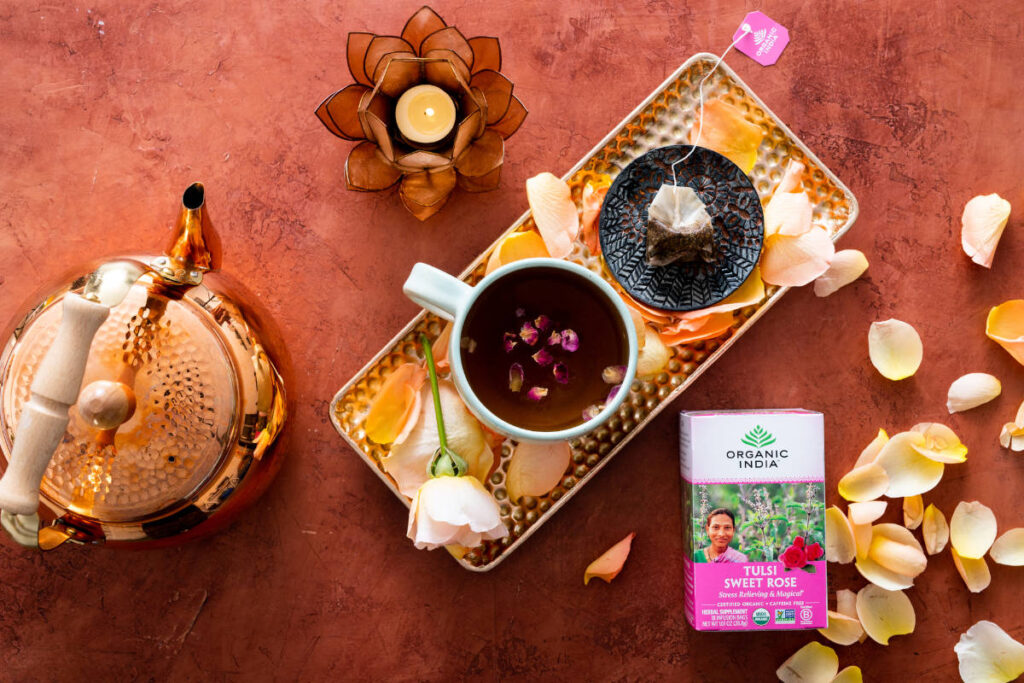
Choose Stevia That Respects the Plant and Your Body
Stevia has the potential to be a beautiful, supportive part of your wellness journey, but only when it’s used the way nature intended. If you’ve ever felt that stevia tasted “off” or left a persistent aftertaste, chances are you weren’t tasting the true leaf at all.
In Ayurveda and regenerative living, we return to the source. Whole leaf stevia is a gift from the earth. At ORGANIC INDIA, we trust the wisdom of plants in their wholeness and honor the traditions that have guided their use for centuries. That’s why we use the whole stevia leaf in our teas, not an extract or steviol glycoside. Our commitment is to purity, wholeness, and honoring the complete profile of the plants we grow and source.
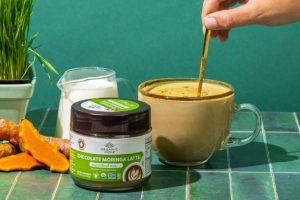
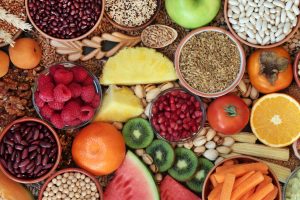
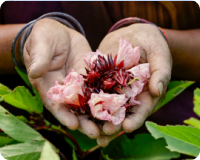
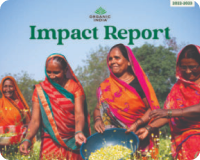
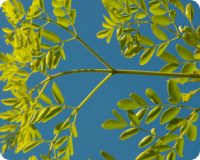


 Kate Tant is a professional health and wellness writer with a strong passion for holistic wellness. Her writing covers topics from Ayurvedic herbs and practices to nontoxic living and intermittent fasting. She is dedicated to helping and encouraging individuals seeking natural solutions to their health.
Kate Tant is a professional health and wellness writer with a strong passion for holistic wellness. Her writing covers topics from Ayurvedic herbs and practices to nontoxic living and intermittent fasting. She is dedicated to helping and encouraging individuals seeking natural solutions to their health.